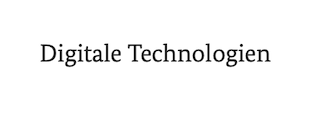ESCADE
Energy-Efficient Large-Scale Artificial Intelligence for Sustainable Data Centers
Data centre power consumption has risen rapidly in recent years, and predictions indicate that it will account for a significant share of global energy consumption by 2030. This development underscores the urgent need to use resources in a more sustainable way. AI applications are major contributors to the rise in power consumption. ChatGPT alone consumed an estimated 1,200,000 kWh for its operation in January 2023. This figure corresponds to the amount of power generated by three wind turbines per month. The German government has now passed a resolution mandating carbon-neutral operations for data centres by 2027. To achieve this, data centres will need to reduce the amount of resources they consume and develop more sustainable operating methods.
This is where the ESCADE project comes in. The ESCADE project was designed to dramatically lower the energy requirements of data centres. It uses leading international hardware and software technologies to improve and enable operators to measure the ecological footprint of AI applications. Central to the project is the use of neuromorphic chip technologies (NPUs), which are integrated into data centres in order to achieve substantial energy savings. These should enable efficiency increases of up to 50 percent in training and up to 80 percent in executing AI models.
As part of the project, ESCADE wants to test and optimise AI use cases for the first time to determine their economic and environmental sustainability. The basis for this will be a framework that will enable the sustainable scaling of computing power and the comprehensive, cross-industry implementation of measurable, sustainable AI systems and use cases.
One promising application of the project’s outcomes lies in the field of sustainable NLP models (neuro-linguistic programming models) for ticket systems. By using NPUs, these models can be operated more energy-efficiently, which will lead to a reduction in power consumption while simultaneously reducing latency.
Another ESCADE use case is the development of sustainable visual computing models for the circular economy for steel. ESCADE strives to use AI algorithms and NPUs to optimise image processing and analysis in the steel industry while simultaneously reducing energy consumption. This will make sorting scrap types in the steel industry more effective and efficient and improve further utilisation of scrap.
The envisaged developments should allow the project to enable economical and carbon-neutral data centre operation. These are just a few of the reasons why ESCADE is making a vital contribution to a more environmentally friendly and sustainable economy.
Consortium:
- German Research Centre for Artificial Intelligence (DFKI)
- NT Neue Technologie AG (NT.AG)
- Stahl-Holding-Saar GmbH & Co. KGaA (SHS)
- SEITEC GmbH (Seitec)
- Dresden University of Technology (TUD)
- Ruhr University Bochum (RUB)
- Salzburg Research Forschungssgesellschaft m.b.H. (Austrian partner)
Project coordination:
- Prof. Dr Wolfgang Maaß
- Scientific Director of the Research Department Smart Service Engineering
- German Research Centre for Artificial Intelligence GmbH
- Recommend this page:
- Print view
